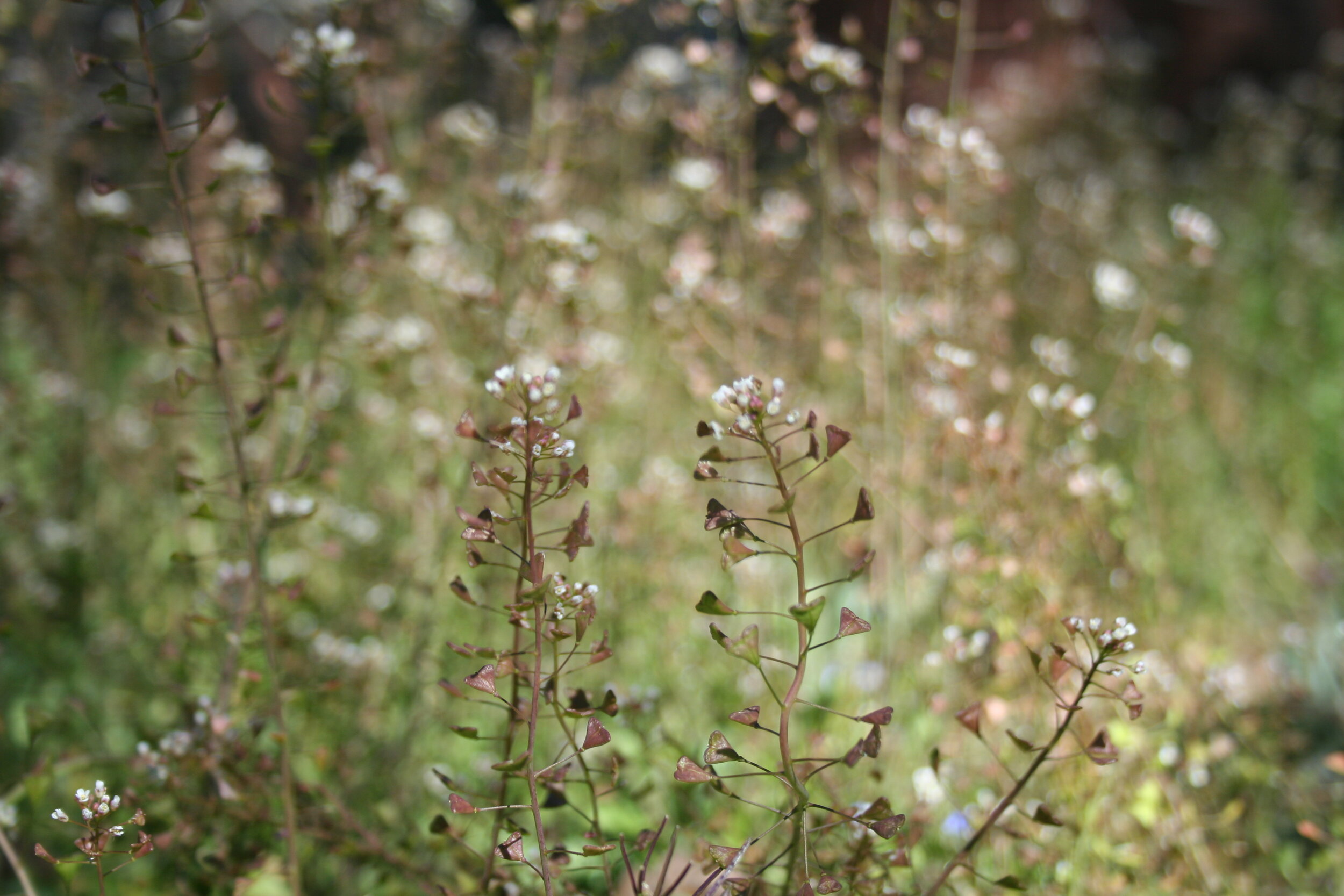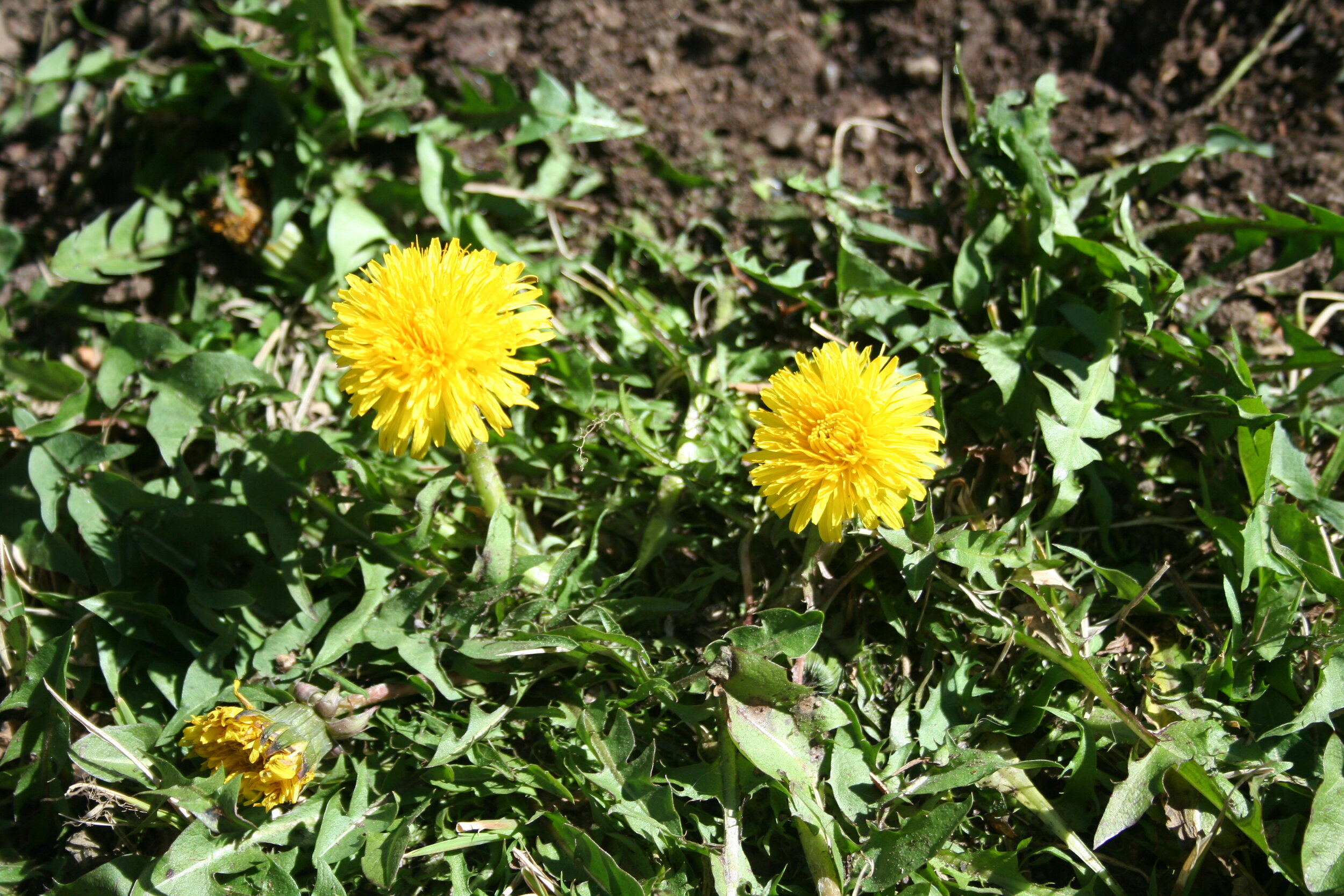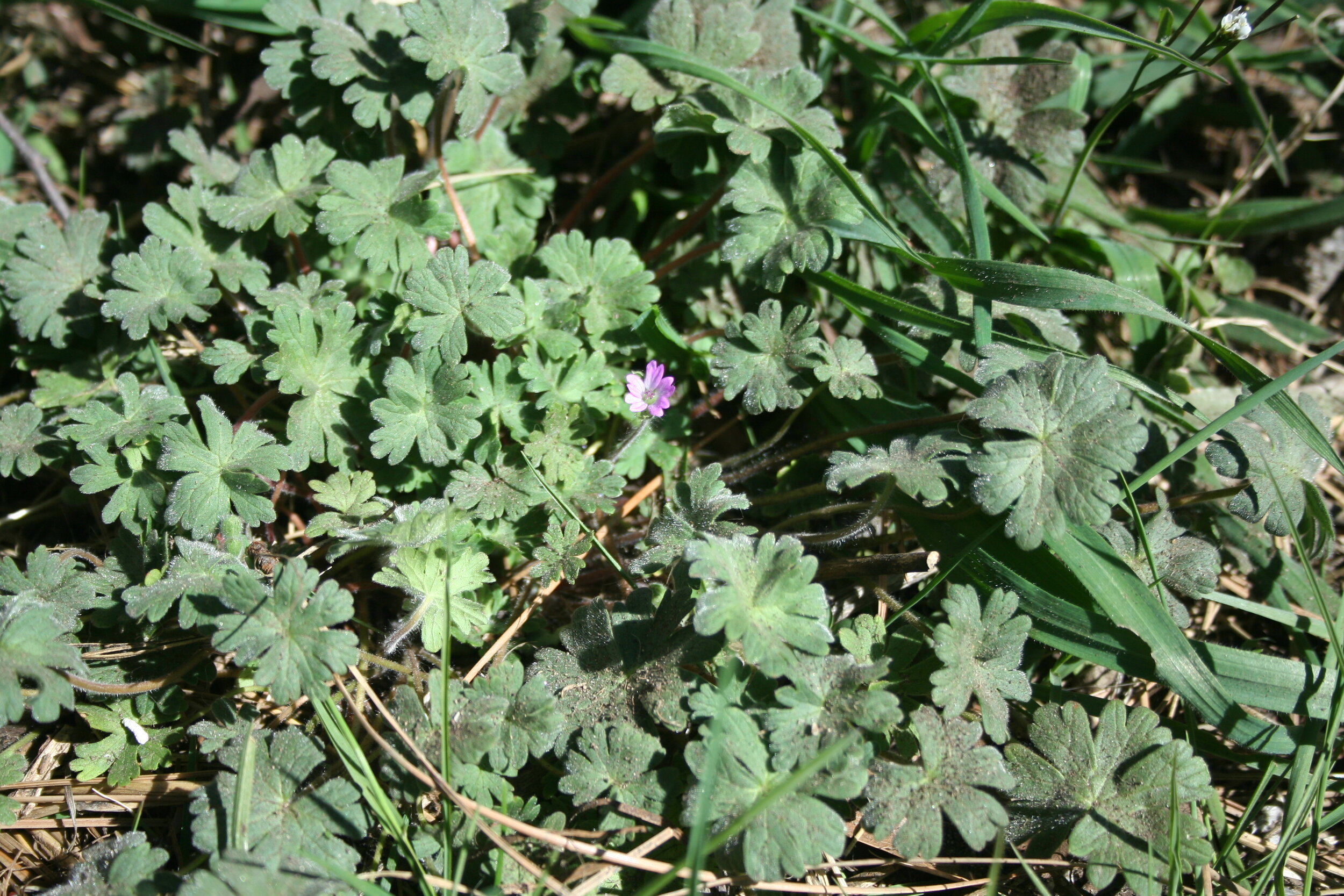Your Weeds Love You
I’ll admit, I’m one of those folks who actually feels bad when I have to thin my sprouts. I mean, what if one of those little carrotlets was the one precious sprout that could save the planet? I’ve also been the girl rapidly removing all the earthworms from the sidewalk after a rain so no one would step on them. Suffice it to say that I’m a little sentimental about all the plants in my garden, even my so-called weeds. But this article isn’t about what you can do for your weeds, it’s what your weeds can do for you. So, I’d like to introduce you to each one of the foliar friends I’ve malingered with already this season in hopes that you’ll consider giving your weeds a chance before yanking them from their fertile homes and tossing them in a waste bin rendering their struggle for life as pointless as our democracy. (did I just say that?)
Green living mulch is a thing. I don’t know many people doing it, but, I’ve made it a thing. It all started when I grew my first solo garden in the wild woods of Williams, OR. I grew tall flowers like delphinium and gladiolus around the whole outer edge as well as densely planted morning glory’s to climb the fences. When I’d set the kids free to rewild themselves in the fir forest, I’d quietly sneak into the private garden nook I’d made for myself, leaving my clothes at the gate. The soft geranium, creeping speedwell, and shamelessly flashy henbit would invite me to lie down on the magic carpet they’d woven just for me. I’d lie there and daydream as long as I could before my sons would piss off some mud wasps and send me running pants-less to their rescue.
What I learned about green living mulches in my nudist daydreaming is that they keep the temperature of the soil moderated at the surface. It was always cool and moist to lay on as they’d prevent evaporation . If I’d aimlessly twist my finger, screwing it into the earth, I’d inevitably bump noses with an earthworm rather close to the cool surface. Worms aren’t into hot yoga. They like to do their workouts in cooler soil. If I’d doze off a moment and open my eyes suddenly, there would most times be a mason bee or braconid wasp kissing the Henbit on the flowers causing me to feel like I’d interrupted something sultry. I’ll admit, I was a little naive about what was a weed and what was a flower and I just didn’t pull anything that wasn’t causing any harm. I’d pull a handful of dandelion and clover out of a spot I wanted to put an eggplant start and a garden spider would dart out to find new shelter. The plants would leave a natural hole in the dank, soil teeming with microbes, that was already aerated by their roots. The dandelion would go in my evening tea and the clover supplemented my rabbit’s diet. What wasn’t to like?
Bare, unprotected soil is susceptible to erosion, the nutrients and microbes can be harmed by the heat of the sun, it’s more likely to grow things you don’t want such as grasses, and it’s no place for beneficial insects who’d prefer a cool shelter to raise their babies in. Living in harmony with the earth’s wild intelligence can yield far more that food and beauty. It’s a philosophy of life. As we watch patriarchal institutions crumble along with their competitive ethos, we can experience the feminine way of cooperation and collaboration. As Speedwell and Henbit slowly take the helm over crab grass and bare soil, we learn the way of wild intelligence. They know just what to do and they can do it by simply growing, there is no need for fighting. When we work with nature we experience ourselves in the whole and understand our place in it. As gardeners we tend the environment and trust nature to do the rest.
Here are some garden allies to celebrate instead of eradicate. Each is photographed in my own garden farmacy and commonly found in Southern Oregon gardens in early spring. If you find them unattractive by summer’s heat, simply remove the tops with a scythe, weed whip or garden sheers and they will form a nice cool carpet of green living mulch.
Shepherd’s Purse: Also called ‘Mother’s Heart’. Anti-inflammatory properties. Seeds act as a laxative. Extract stops excessive bleeding.
Chickweed: Can make a mild pesto with it or use it as a replacement for sprouts or shredded lettuce. Tastiest during cool weather. Herbalists know it as an anti-inflammatory
Speedwell: Pretty and delicate blue flowers. Used as a cough remedy and to ease irritated skin. Was used as a tea substitute in 19th century France.
Henbit or Dead Nettle: Purple & green ombre tiers with lavender flowers. Bees throng to the flowers abundant with nectar. As a tea it treats looseness of the bowels and internal bleeding.
Dandelion: A bitter green that helps to cleanse the liver. The greens are delicious in salads. Roast the root for a coffee-like warm beverage. Excellent food for bees.
Dove’s Foot Geranium: Used medicinally as a treatment for gout, joint pain, muscle pain and colic. A decoction in wine can be used to treat internal injuries. The leaves contain a substantial amount of gallic acid and can be used as a substitute for witch hazel. Is a good printer for eco-printing.
Plantain: Tea brewed from the seeds has a high mucilage content aiding bleeding from mucous membranes. The leaves contain tannins having an astringent effect to help draw tissues together. Commonly used for snake and insect bites.
Happy growing!







